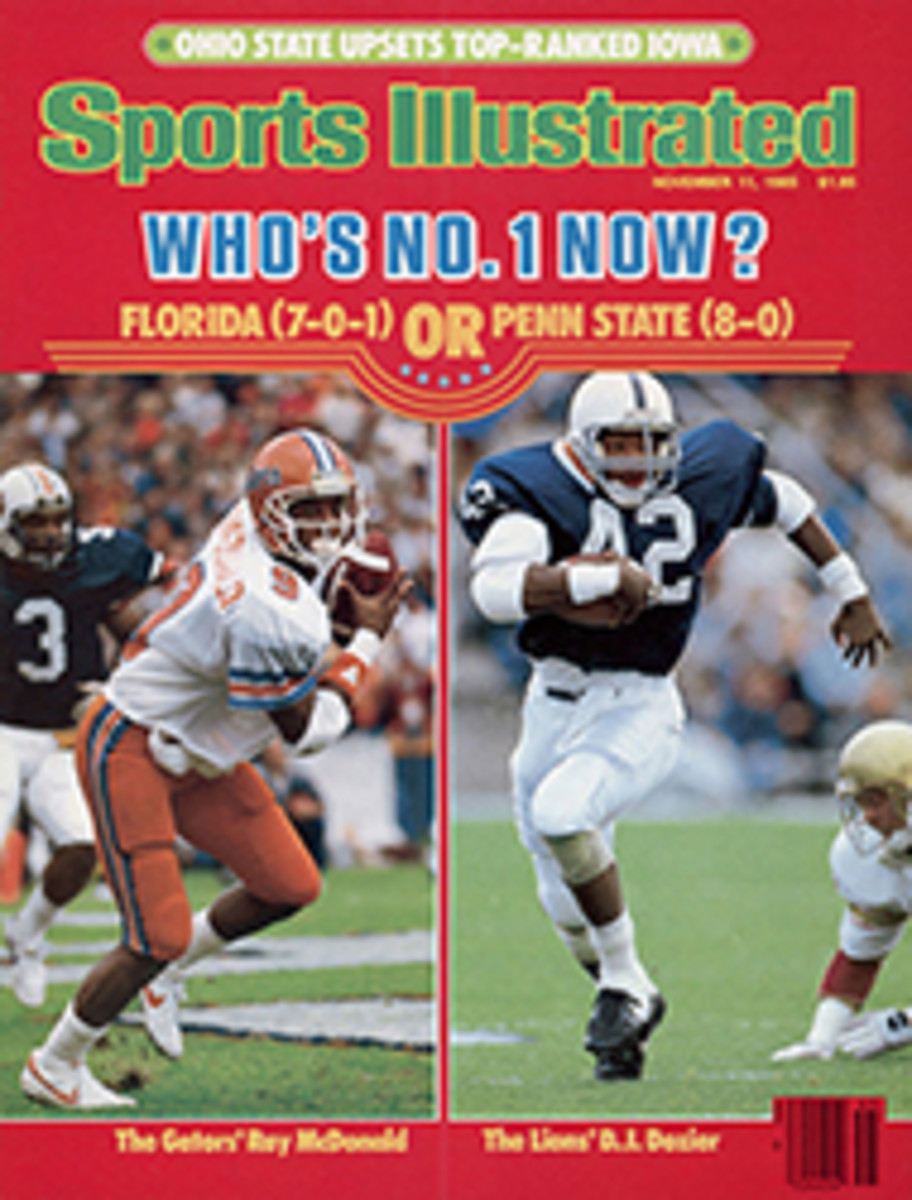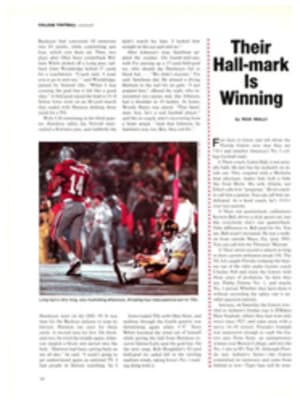
CENTRAL PARK'S SAILORS REMAIN ON SHORE BUT ARE AWASH IN ENTHUSIASM
Nine sleek racers are cutting their way toward a windward mark. The breeze is stiff, the fleet tight, when suddenly one boat veers off course. Its sails luff helplessly. The skipper groans, then sees his problem: a young boy with a remote control motorboat.
On a beautiful autumn day in New York City's Central Park, two groups of folksingers are performing near the Sheep Meadow. On the walkways there are joggers, cyclists, yuppies and their puppies. And at Conservatory Pond—like football coaches on a sideline—stand nine men with radio transmitters solemnly piloting their model sailboats by remote control.
Mort Brown, a manufacturers' rep for snack foods, is the skipper whose craft has veered from the fleet. The boy with the motorboat is operating on Brown's frequency, rendering him powerless.
Brown asks the lad to desist. "Qu'estce qu'il a dit?" the boy asks his mother, who translates. The boy, his eyes a little watery, complies.
What is taking place in the heart of the city is the Keough Memorial Regatta, named for a longstanding member of the Central Park Model Yacht Club, who, as legend has it, one day collapsed and died as he was putting his boat in the water.
Founded in 1916, the club had grown out of a group that included Nathaniel Herreshoff, the Babe Ruth of yacht designers. Herreshoff always worked with models, never with line drawings, not because he couldn't operate that way, but simply because he preferred models, a sentiment that the Central Park yachtsmen understand. "You either gotta love this sport or you're turned off completely," says Fritz Larson, 62, the retired president of an ad agency.
On this day the boats are moving swiftly, with Jon Elmaleh, 25, a furniture designer and model-boat builder who holds 13 national model titles, routinely beating the fleet by a leg or more. "It's reacting to the puffs better," he explains. "The wind has a definite rhythm and you get into it."
Elmaleh grew up on the East Side of Manhattan, a stone's throw from the pond. He started sailing at Conservatory Pond when he was nine and, under the tutelage of the club's older members, started building his own boats soon after.
Elmaleh's skill with model boats led him to the Rhode Island School of Design. While there he raced dinghies and built boats in the woodshop, which, in turn, led to his current career as a furniture designer. "The big-boat designers look down on us as toy-boat builders," says Elmaleh, "but we can come up with new designs more easily—and often do." A version of Australia II's wing keel, he points out, was first used on a model boat back in 1949.
Until 1972 the boats in Central Park raced on the vane system—that is, on autopilot—from one side of the pond to the other, with skippers pushing their boats off with bamboo poles and hoping for the best once their boats had been launched. Nowadays, with much of the guesswork lost to radio control, model racing is more like a chess match than child's play. The boats are made of fiberglass and are roughly 50 inches long, with 1,500 square inches of sail. Classic modelists—still a large part of the club—like to call them disco boats because they sport shiny Mylar sails and tend to tack all at once, like dancers doing the hustle.
Among Elmaleh's competitors is Rene Vidmer, 42, a graphic designer who has sailed solo across the Atlantic and who two years ago lost a boat on a reef while night sailing in the Galàpagos. Today his Syndicate 1.0 is lagging far behind the pack. "I'm a lousy sailor," he explains. "They like that down here. I've sailed the Pacific and everything else, and I'm still the worst."
At one point, on a downwind leg, a strong gust pushes several of the boats, and they begin planing. Two others plough under the surface long enough to submerge their decks and soak their trimming and steering mechanisms.
"The nicest thing about this is you have to concentrate on it enough that you don't think about anything else," says Roy Langbord, 33, an attorney for Showtime. "After law school I wanted something to get my mind off work. It's more adult than it appears."
The day's 10 races end. Langbord places second, Larson takes third, retired ad writer Stephen Van Ness fourth and Brown is fifth. Vidmer, to his surprise, is sixth, and Sal Cantarella, 31, an in-house printer at Bergdorf-Goodman, is seventh, ahead of the two soggy boats that dropped out. At last the pond was left to the French boy and his motorboat. Did he understand why the sailor had yelled at him? "Il a le même contact que moi," he explains, pointing to his antenna and adding that he, too, had run into unexpected problems. "Le pigeon, là. Il se pose sur mon bateau."
PHOTO
TED KAPPLER
It's smooth sailing as the miniature regatta moves out across the pond's calm waters.
PHOTO
TED KAPPLER
Skipper Elmaleh prepares for a launch.

